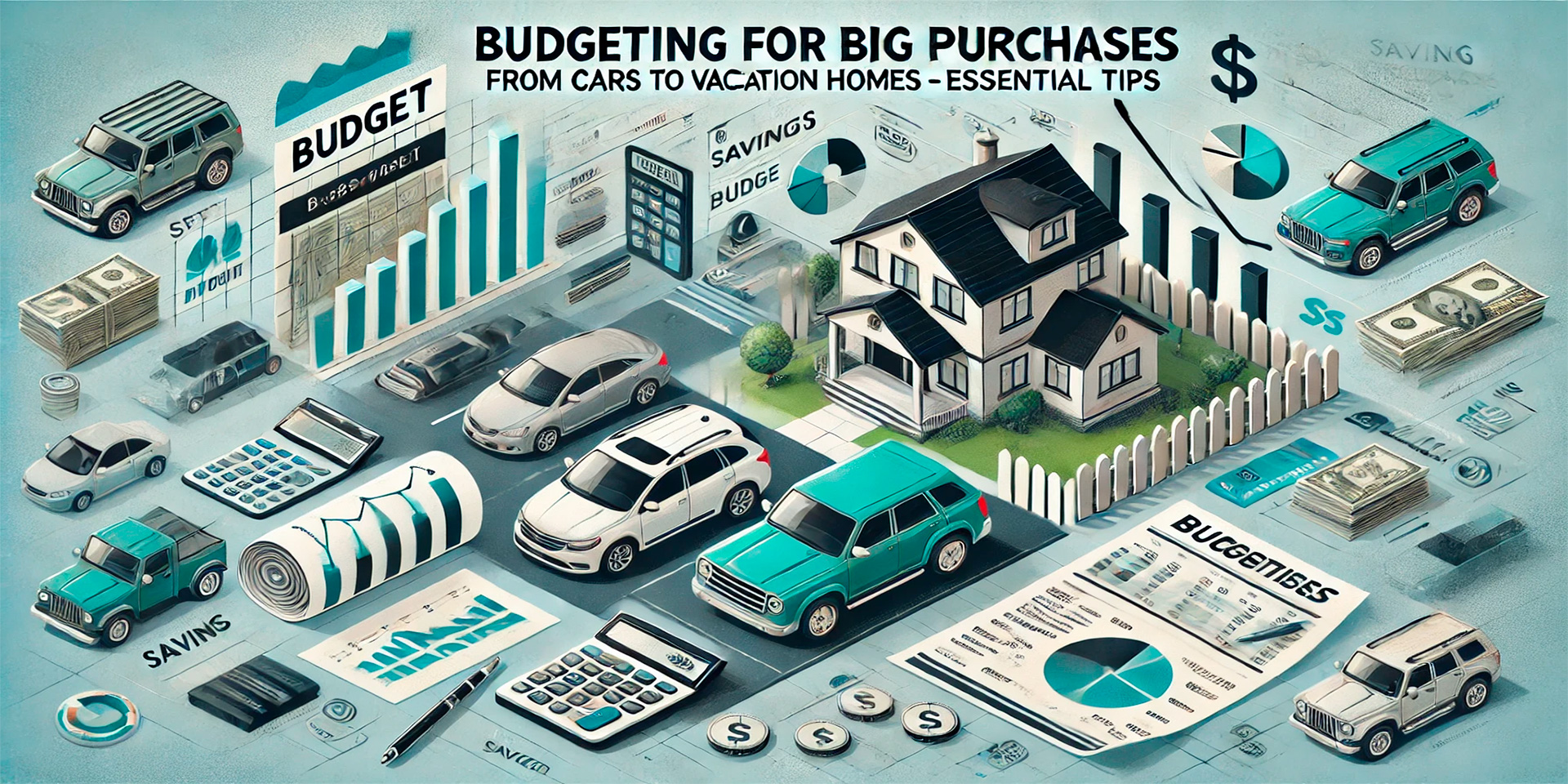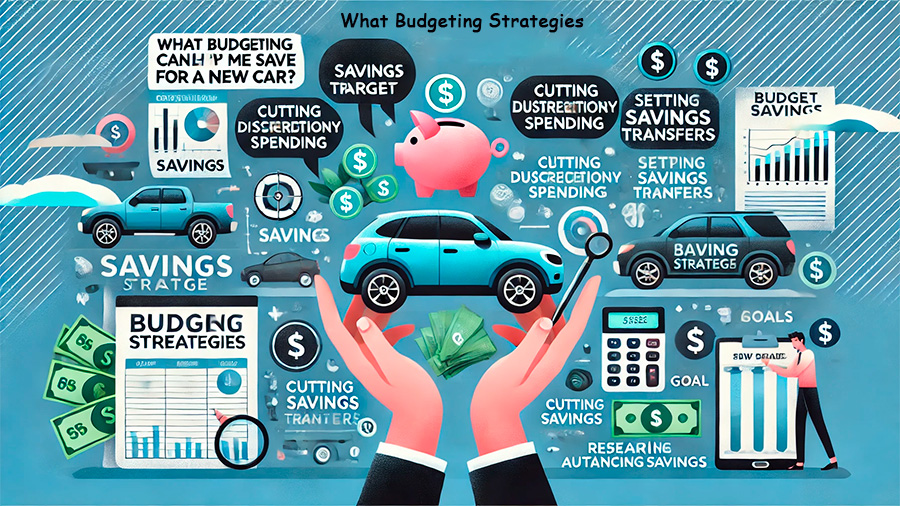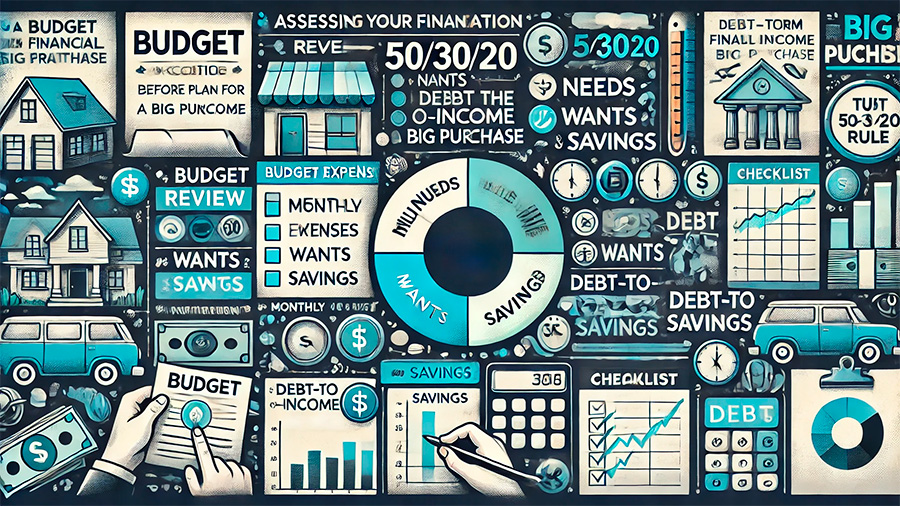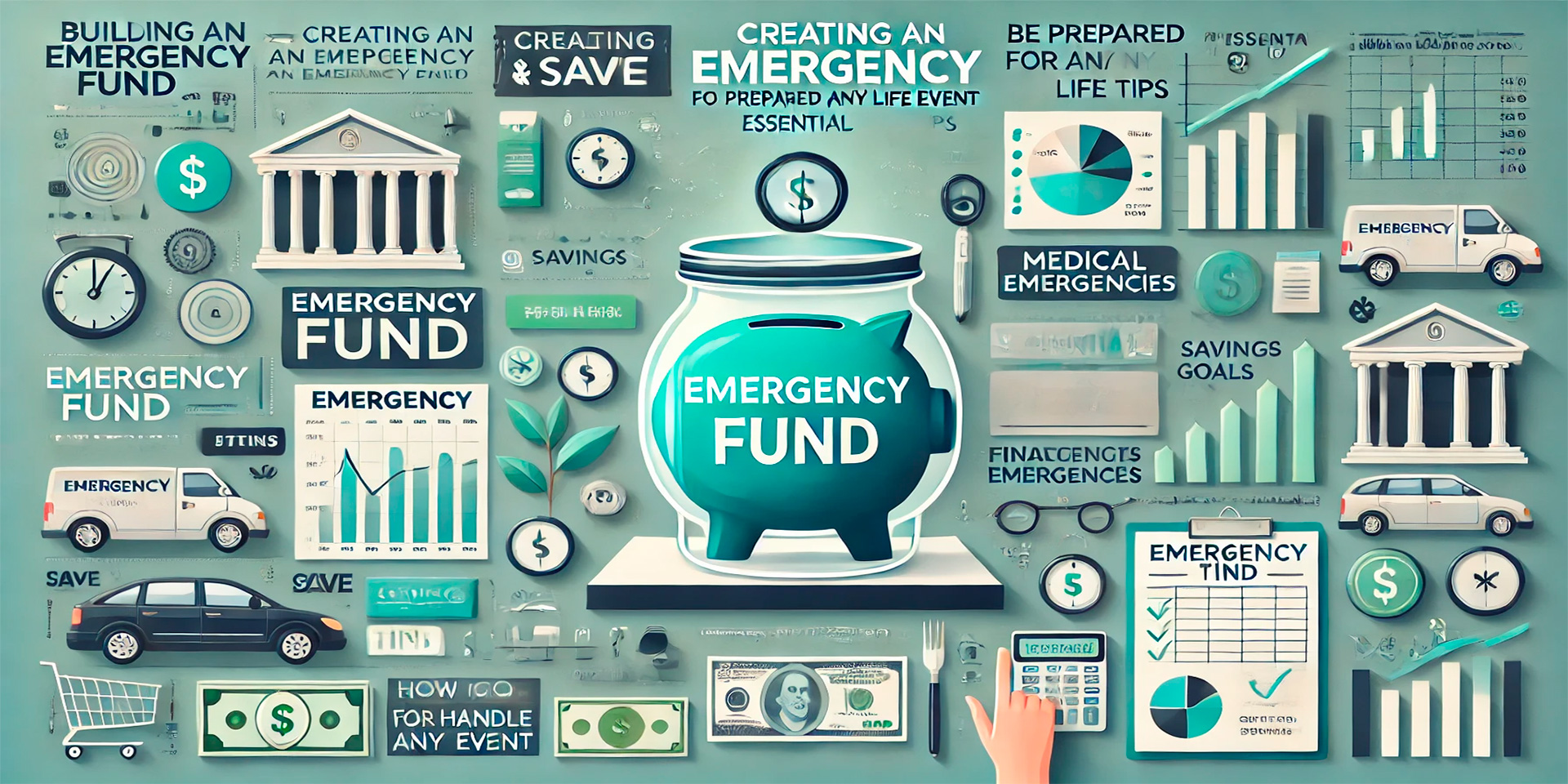
Budgeting for Big Purchases: From Cars to Vacation Homes – Essential Tips
To set realistic financial goals for big purchases like cars or vacation homes, start by pinpointing the exact amount needed and the timeframe to achieve it. Break the total cost down into manageable monthly savings. Review your budget using the 50/30/20 rule: 50% of income for necessities, 30% for wants, and 20% for savings and debt repayment. This method will help you figure out how much you can realistically save each month.
Next, factor in hidden costs. For a vacation home, consider property taxes, insurance, maintenance, and HOA fees. When planning for a new car, remember insurance, taxes, and maintenance. These extra costs ensure you’re not caught off guard and can enjoy your purchase without financial strain. Budgeting apps can be helpful here—they automate expense tracking and provide real-time updates on your progress.
Finding additional income sources can make a big difference. Think about side hustles, freelancing, or even renting out a space. Using tools like financial planners or AI can tailor advice to your situation—they analyze your budget, predict future costs, and help you stay on track. By staying focused and making smart adjustments, you’ll hit your savings goal without breaking a sweat.
How Do I Set Realistic Financial Goals For Major Purchases?
To set realistic financial goals for major purchases, you need to be clear and specific about what you want. Determine the total cost and set a time frame for when you need the money. For instance, if you need $24,000 in two years, you’ll need to save $1,000 per month.
Steps to Follow:
- Define Your Goal: Clearly identify the major purchase and the exact amount needed.
- Assess Your Finances: Review your income, expenses, debts, and assets. Create a budget to track your spending.
- Set Up a Savings Plan: Open a dedicated savings account for your goal to keep savings separate and reduce temptation.
- Automate Savings: Set up automatic transfers to your savings account every payday for consistent savings.
- Cut Unnecessary Expenses: Identify areas to cut back, like dining out or subscriptions, and redirect these funds to your savings.
- Consider Additional Income: Look for additional income sources, such as a part-time job or freelancing, and save the extra earnings.
- Monitor and Adjust: Regularly check your progress and adjust your budget or savings plan if needed.
Using the S.M.A.R.T criteria (Specific, Measurable, Achievable, Realistic, Time-limited) helps keep your goals practical and within reach.
As a final point, setting realistic financial goals involves clear definition, a solid savings plan, and consistent monitoring. Stick to your plan and adjust as necessary to achieve your major purchase without financial strain.

What Budgeting Strategies Can Help Me Save For A New Car?
To save for a new car, you need to first determine how much you need for a down payment and the total cost. Aim for 20% down for a new car and 10% for a used one. Here are some key strategies:
- Create a Car-Savings Fund: Open a dedicated savings account and automate transfers from your paycheck to this fund. This helps you build a consistent saving habit.
- Adopt a Budgeting Method: Use the 50/30/20 rule. Allocate 50% of your income to essentials, 30% to non-essentials, and 20% to savings. Cut back on non-essentials like eating out and entertainment.
- Factor in Additional Costs: Plan for insurance, sales tax, registration fees, maintenance, fuel, and inspection costs. Include these in your savings goal to avoid surprises.
- Reduce Expenses: Lower monthly expenses by refinancing existing debts, cutting unnecessary subscriptions, and finding cheaper alternatives for regular expenses.
- Research Financing Options: Compare offers from national banks, community banks, credit unions, and online banks to find the best loan terms.
- Use Online Tools: Input different scenarios into an auto loan calculator to understand how varying down payments affect your monthly payments and interest costs.
- Consider Used Cars: Evaluate the pros and cons of new vs. used cars. Used cars can be more affordable and help you avoid high monthly payments.
To sum up, by creating a dedicated fund, adopting smart budgeting methods, factoring in all costs, reducing expenses, researching financing options, using online tools, and considering used cars, you can effectively save for your new car while managing your overall budget.

How Can I Assess My Financial Situation Before Planning For A Big Purchase?
To assess your financial situation before planning for a big purchase, start by reviewing your budget. Track where your money goes each month to understand how much you can afford to spend without overspending. Calculate all your current monthly expenses and your savings.
Next, determine the true cost of the big purchase you’re considering. Research prices, compare options, and document all associated costs to avoid surprises. Once you know the total cost, see how much cash you can allocate without dipping into your emergency funds.
Use the 50/30/20 rule for budgeting: spend 50% of your income on needs, 30% on wants, and save 20%. Adjust your savings strategy accordingly to set aside the necessary funds. If your current financial situation can’t cover the big purchase, you can either extend the time to save, reduce spending in other areas, or scale down your purchase plans.
Consider how this purchase will impact your long-term financial stability. Ensure it doesn’t hinder your retirement savings or other financial goals. Calculate your debt-to-income ratio if you plan to finance the purchase.
Finally, before making the purchase, ask yourself some key questions to ensure it fits within your budget and aligns with your financial priorities.
To wrap things up, start by reviewing your budget, determine the true cost of the purchase, and use the 50/30/20 rule to manage your finances. Assess the impact on your long-term financial stability and ask key questions to ensure the purchase aligns with your goals.
What Are The Hidden Costs To Consider When Buying A Vacation Home?
When you buy a vacation home, there are several hidden costs you should consider beyond the purchase price. Here are the key ones:
- Maintenance and Repairs: Regular upkeep like painting, landscaping, and fixing appliances adds up. If you rent the property out, wear and tear can increase these costs.
- Property Taxes: Vacation homes often have higher property taxes since they’re considered luxury items. Taxes can also rise over time.
- Insurance: Insurance for vacation homes, especially in areas prone to natural disasters, is higher than for primary residences.
- Furnishing and Decorating: New furniture, decorations, and appliances can be costly, particularly if you want a comfortable and attractive setup.
- Homeowners Association (HOA) Fees: If your home is in a planned community, expect monthly or annual fees for maintenance and amenities.
- Utilities: Utilities might cost more than a primary residence due to frequent use by guests or seasonal demand.
- Escrow and Closing Costs: Paying for closing costs, property taxes, and other expenses through escrow agreements can add significant costs at the time of purchase.
- Second Mortgage: Financing a second home typically requires a larger down payment, higher credit scores, lower debt-to-income ratios, and extra savings.
- Property Management: If you’re not managing the property yourself, hiring a manager for tasks like cleaning and repairs will add to your expenses.
In the end, understanding these hidden costs helps you budget effectively, ensuring your vacation home remains a source of joy rather than financial stress.
How Can I Use The 50/30/20 Rule To Budget For A Significant Purchase?
To use the 50/30/20 rule to budget for a significant purchase, start by dividing your after-tax income into three categories: 50% for needs, 30% for wants, and 20% for savings or debt payments.
First, identify your needs. Allocate 50% of your income to essentials like housing, groceries, utilities, transportation, and childcare. These are non-negotiable expenses.
Next, categorize your wants. Use 30% for non-essential expenditures that bring you joy, such as dining out, entertainment, hobbies, and travel.
Finally, prioritize savings/pay off debt. Reserve the remaining 20% for savings, investments, or paying down debt. This is crucial for building financial security and achieving future goals.
For a significant purchase, such as a car or a vacation home:
- Adjust temporarily: Reduce spending on wants to bolster your savings more aggressively.
- Create a sub-budget: Within your savings category, create a dedicated fund for the major purchase. Consistently contributing towards this fund ensures you stay on track without disrupting other financial priorities.
- Monitor & adapt: Regularly review your spending categories and adjust as needed. Flexibility within the 50/30/20 rule is key, especially if living expenses or incomes change.
As a final point, stay flexible with your budget, pinpoint essential and non-essential expenses, and consistently save for your significant purchase.


